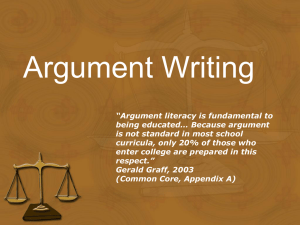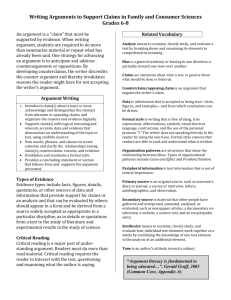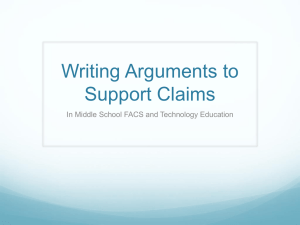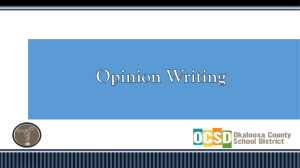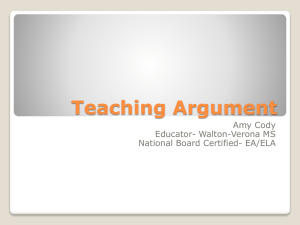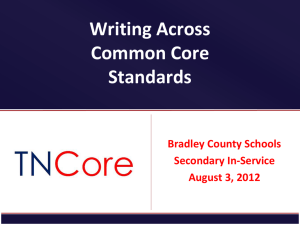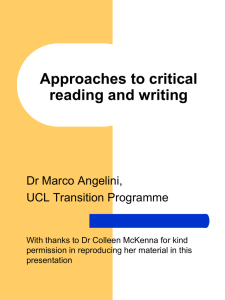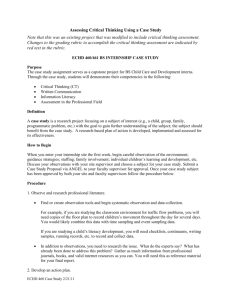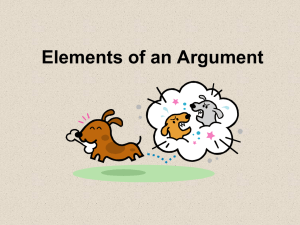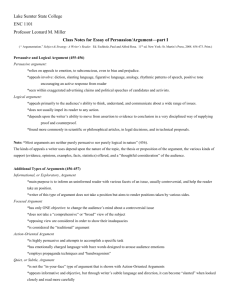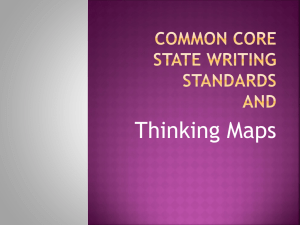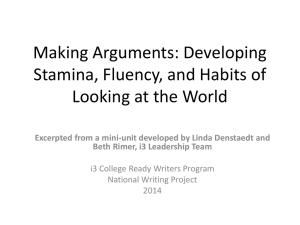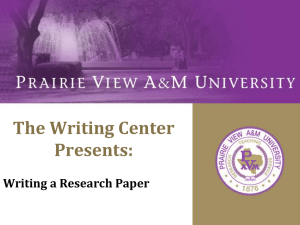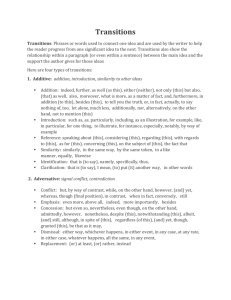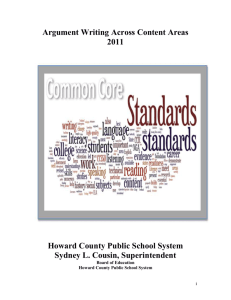Argument-HS3 - Transition to Common Core
advertisement
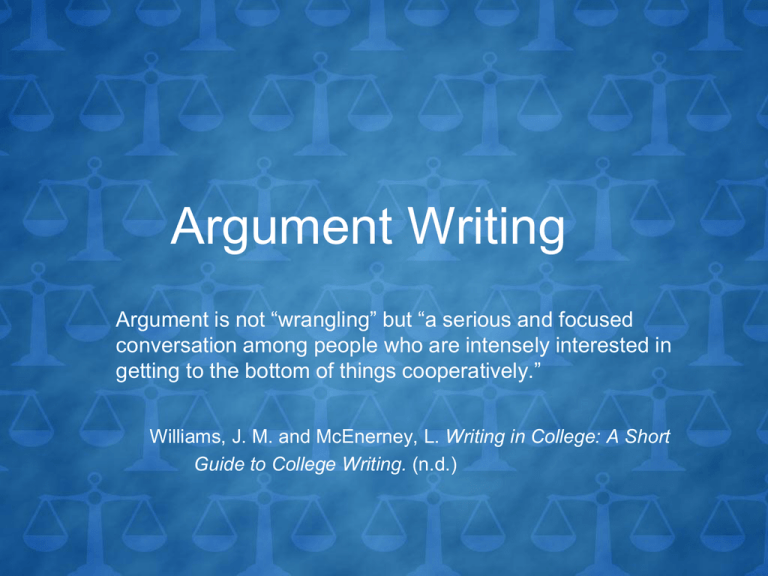
Argument Writing Argument is not “wrangling” but “a serious and focused conversation among people who are intensely interested in getting to the bottom of things cooperatively.” Williams, J. M. and McEnerney, L. Writing in College: A Short Guide to College Writing. (n.d.) An argument is a claim that must be supported by evidence Arguments are used for many purposes—to change the reader’s point of view, to bring about some action on the reader’s part, or to ask the reader to accept the writer’s explanation or evaluation of a concept, issue or problem. What is an argument? An argument is a reasoned, logical way of demonstrating that the writer’s position, belief, or conclusion is valid. In English language arts, students make claims about the worth or meaning of a literary work or works. They defend their interpretations or judgments with evidence from the text(s) they are writing about. Persuasion vs Argument — Differences Persuasion Argument Attempts to convince the reader to accept a thesis as truth. Attempts to convince the reader to accept a claim as truth. Appeals to the credibility, character, or authority of the writer (ethos). Focuses on evidence (logos). Is often grounded more in feelings (pathos) than in facts. Is often associated with speeches and frequently requires listeners/ readers to take some sort of action to remediate an issue. Is grounded more in facts, data, and logic. Requires critical reading of the text(s); may include evidence from other sources. Addresses counterclaims fairly in order to present a complete argument. What Makes an Effective Claim? • Takes a clear position • Is debatable – people could reasonably have different opinions on the issue • Is narrow enough to be supported effectively within the scope of the assignment Types of Claims • Claims of cause and effect • Argues that one person, thing, or event caused something else to occur • Claims of definition or fact • Argues what a definition is or if something accepted as a “fact” is really so • Claims about values • Argues the worth of something and whether we value it or not • Claims about solutions or policies • Argues for or against specific approaches to problems Sample Claims Text: The Catcher in the Rye Claim: Holden Caulfield places himself above the “phonies” in the world, but Holden is the biggest “phony” of all. Text: Macbeth Claim: Macbeth’s tragic flaw is not blinding ambition but his allegiance to Lady Macbeth. Why Address Counterclaims? Acknowledging counterclaims -• Enhances the writer’s credibility and thoroughness • Recognizes that the reader may have a different point of view “Conceding that the opposing point is valid and then building upon it to further one’s own claim allows a writer to make the audience feel appreciated without giving up her or his own position.” http://www.winthrop.edu/wcenter/wcenter/toulmin.htm Organizational Pattern • Introduction o Present the claim – a debatable statement • Body o Present evidence to support the claim • Cite credible sources • Make a connection between the evidence and the claim o Present counterclaim(s) • Cite credible sources • Make a connection between the evidence and the counterclaim • Conclusion o Provide a concluding statement or section that follows from and supports the argument presented Argument Beyond the Classroom The proper context for thinking about argument is one in which • the goal is not victory but a good decision, • all arguers are at risk of needing to alter their views, • a participant takes seriously and fairly the views different from his or her own. Such capacities are broadly important for the literate, educated person living in the diverse, information-rich environment of the twenty –first century. Fulkerson, Richard. Teaching the Argument in Writing. 1996, 16-17. Links to the Common Core Common Core English Language Arts Standards • http://www.corestandards.org/assets/CCSSI_ELA%20Standar ds.pdf Appendix A: Research supporting key elements of the standards • http://www.corestandards.org/assets/Appendix_A.pdf Appendix B: Text exemplars and sample performance tasks • http://www.corestandards.org/assets/Appendix_B.pdf Appendix C: Samples of student writing • http://www.corestandards.org/assets/Appendix_C.pdf
